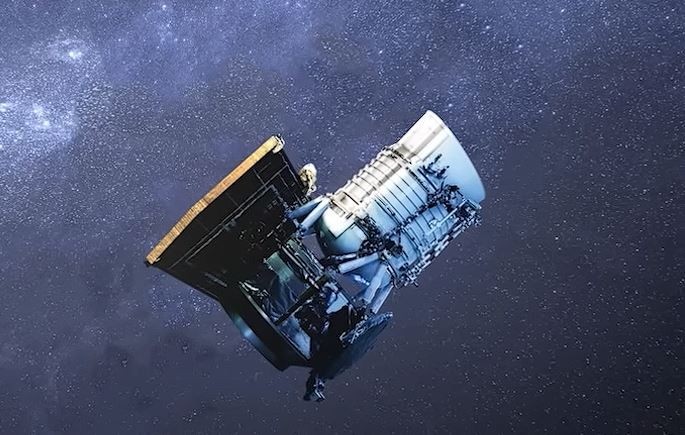Out of NASA’s many spacecraft exploring our solar system, one unique telescope stands out for its mission of safeguarding our planet.
The Near-Earth Object Wide-field Infrared Survey Explorer (NEOWISE) is a repurposed telescope that began its journey with a different objective.
Originally launched in late 2009 under the name Wide-field Infrared Survey Explorer (WISE), this cryogenic telescope peered into the distant cosmos using infrared wavelengths.
This mission, exceeding its planned duration, allowed WISE to scan the entire infrared sky twice with unmatched sensitivity.
The data gathered by WISE revealed a fresh perspective on distant galaxies, active black holes, and the universe’s building blocks.
From exploding white dwarfs to gas-emitting comets, WISE captured a wealth of information. However, a crucial element limited its original functionality a finite supply of super-cold hydrogen coolant.

Once depleted, the telescope could no longer achieve the level of observation it was designed for. Launched in 2009, the Wide-field Infrared Survey Explorer (WISE) wasn’t built with asteroid hunting in mind.
Its initial mission was far grander: to create a comprehensive infrared map of the cosmos, revealing celestial objects invisible to visible light telescopes.
After a productive ten-month survey, WISE reached a turning point in 2010. Its critical coolant ran out to maintain its instruments at ultra-cold temperatures.
This left the telescope unable to continue its original mission, and it entered a low-power hibernation mode. However, this wasn’t the end of the story for WISE.
With its innovative design and powerful infrared vision, NASA engineers recognized the telescope’s potential for a new mission.
In 2013, they brought WISE out of hibernation and gave it a new lease on life. Renamed NEOWISE, the spacecraft was repurposed to play a vital role in protecting our planet.
Its keen infrared eyes scanned the skies for near-Earth objects (NEOs) asteroids and comets that could potentially pose a collision threat to Earth.
This resourceful move by NASA transformed NEOWISE into a crucial asset in the ongoing effort of planetary defense.
As the grip of atmospheric drag tightens, fueled by an upswing in solar activity, the NEOWISE telescope a vigilant eye safeguarding us from potentially hazardous near-Earth objects (NEOs) approaches its twilight.
While a natural demise loomed for late 2024 or early 2025, NASA is taking decisive action by shutting down scientific operations well ahead of schedule.
To preserve NEOWISE’s remaining functionality, data collection will cease entirely on July 31st, 2024. This shutdown marks a turning point, followed by a permanent hibernation on August 8th, effectively concluding NEOWISE’s mission.
This creates a temporary but significant gap in our dedicated NEO detection capabilities, a pause that will stretch until the arrival of a powerful successor the Near-Earth Object Surveyor (NEO Surveyor) in late 2027.
NEO Surveyor promises to be a game-changer designed from the ground up for this critical role. Equipped with a state-of-the-art infrared telescope, it will surpass NEOWISE in every aspect, enabling the identification and characterization of NEOs with unparalleled precision.
This crucial capability will bolster our planetary defense efforts, ensuring we have a comprehensive understanding of these celestial visitors and, if necessary, the ability to deflect any that pose a threat.

